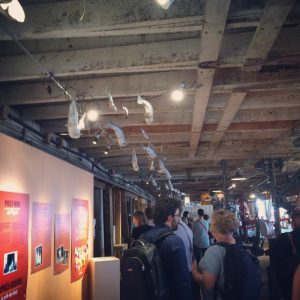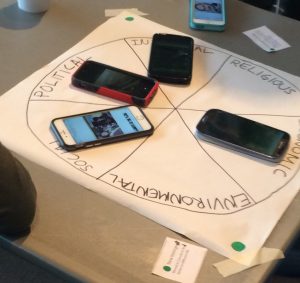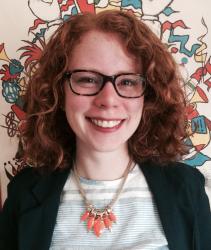This past week I attended the Historical Thinking Summer Institute at the Museum of Vancouver. The course is intended for both museum professionals and teachers to explore The Big Six: Historical Thinking Concepts by Peter Seixas and Tom Morton. The book encompasses a shift in the way that museums and educators look at teaching and learning about history. In place of learning ‘the facts’ of history through textbook rote learning, students are being asked to ‘do’ history. This means actually acting as the historians themselves and constructing their understanding of history through the historical thinking concepts.
What are the Big Six?

Seeing historical thinking in action at the Gulf of Georgia Cannery in Steveston.
Each of the concepts look at different aspects of constructing an history. They are Historical Significance, Evidence, Continuity and Change, Cause and Consequence, Historical Perspective and the Ethical Dimension.
Each concept has separate guideposts which illustrate how to work with them and also offer potential teaching strategies when approaching them with learners. All of the concepts work together to help learners begin to think like an historian. The interpretation of both primary and secondary sources (Evidence) is central to all of the concepts.
What does this have to do with museums?
Although historians and curators may use the historical thinking concepts, the process and skills that are used to put histories, exhibits together have not always been transparent. By sharing this process and helping to teach others to ‘do’ history themselves, museums and archives can open their collections to further understandings and interesting collaborations with the communities they work with.
Embracing the historical thinking concepts
This past week was filled with inspiring conversations with both museum professionals and teachers alike. The potential (and need!) for collaborations amongst teachers, museums, universities and so on stood out. We have a common interest and passion for history education and there are many ways we can better work together.

Using low-tech and hi-tech teaching strategies for an exhibit based historical thinking game!
As part of our course, we were asked to work in groups, to come up with ideas on how to encourage and incorporate the historical thinking concepts into our practice, whether in the classroom, for a museum program or as an exhibit. Our group took a game-based approach and came up with an exhibit based game which had students thinking critically about primary sources, historical significance and perspectives.
There are so many great ideas and ways to bring historical thinking into museums. Leaving this course left me feeling inspired and enthusiastic to bring these ideas into my work here.
You can check out some of the photos and thoughts shared at this year’s institute with #HTSI2016.


Comments are closed.